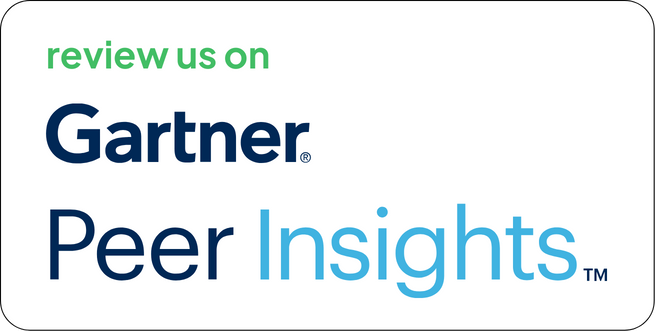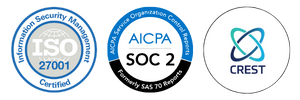Managing access to a cybersecurity platform is just as critical as the actions performed within it. For organizations using Google Workspace to centralize email, calendar, and identity services, it only makes sense to extend that governance to applications like Strobes.
This integration eliminates redundant user account creation, streamlines onboarding, and ensures deactivation flows align with your HR and IT lifecycle. More importantly, it aligns authentication with policy, without compromising speed or usability.
Let’s break down what Google Workspace Integration with Strobes enables, how it works, and why it matters for high-scale, security-conscious teams.
What Is Google Workspace Authentication?
Google Workspace offers an enterprise-grade identity provider (IdP) service that supports SAML 2.0 for single sign-on (SSO). When integrated with Strobes, it allows your users to log in to the platform using their Google-managed identities, enforcing policies like multi-factor authentication (MFA), access reviews, and session timeouts at the IdP level.
Common strengths of Google Workspace as an IdP include:
- Centralized control over access to SaaS applications
- Built-in MFA, IP restriction, and session management
- Quick user provisioning and deprovisioning
- Extensive support for enterprise SAML configurations
While Google handles the identity layer, Strobes applies role-based access control (RBAC), audit tracking, and authorization once the user is authenticated.
What Is Strobes?
Strobes is a modern Continuous Threat Exposure Management (CTEM) platform. It consolidates vulnerabilities across your stack application, infrastructure, containers, and code, and drives action across engineering, DevOps, and security workflows.
Within Strobes, user authentication gates access to modules like:
- Risk-Based Vulnerability Management (RBVM)
- Application Security Posture Management (ASPM)
- Attack Surface Management (ASM)
- Pentesting-as-a-Service (PTaaS)
That access needs to be reliable, governed, and operationally scalable. Google Workspace makes that possible.
Purpose of the Integration
The integration is built for teams that:
- Want to reduce the overhead of maintaining internal user accounts
- Use Google Workspace as their primary identity system
- Need to apply consistent authentication policies across tools
- Are scaling teams across multiple geographies or business units
By enabling SAML-based login from Google Workspace, you minimize user management complexity and tighten access governance without slowing anyone down.
How the Integration Works?
1. SAML Setup and Identity Mapping
The Strobes admin console provides the required service provider (SP) metadata, ACS URL, and Entity ID. In your Google Admin panel, this data is used to configure a new custom SAML app.
The integration supports:
- SAML assertions for primary email
- Role assignment based on admin-defined logic
- Just-in-time (JIT) provisioning for new users (if enabled)
Authentication is redirected to Google Workspace. After successful verification, Strobes assigns roles and access based on your configuration.
2. Authentication Flow and Session Control
After integration, the login becomes a streamlined flow:
- A user visits the Strobes login screen and selects “Sign in with Google.”
- They are redirected to the Google Workspace login portal.
- Credentials and policies (e.g., MFA) are enforced by Google.
- A signed SAML assertion is sent back to Strobes.
- Strobes reads the assertion, validates it, and grants access.
If the user already exists, their profile is matched. If not, and JIT is enabled, the user is created with a default role (viewer, analyst, admin, etc.).
3. Admin Capabilities and Audit Trail
Admins retain complete visibility into all authentication events:
- Successful and failed login attempts
- First-time logins and role assignment trails
- SSO logs tied to user IDs and IP addresses
Role changes, user deactivation, and access expiration are still governed by Google Workspace policies, ensuring alignment between HR offboarding and system access.
Why Google Workspace Integration with Strobes Matters?
This isn’t just a login convenience, it’s an identity management enhancement. Below are the top reasons teams rely on this integration:
1. Cuts Down Account Sprawl
Without SSO, each user needs an account created and managed in Strobes. That means:
- More manual effort
- Higher risk of stale accounts
- Fragmented password policies
By authenticating through Google, you gain:
- Zero account duplication
- Centralized deactivation
- Unified password and MFA policies
2. Tightens Security Without Adding Friction
Every organization needs to balance access and control. With Google Workspace:
- MFA is enforced at the IdP level
- Risky login attempts can be blocked based on location or device
- Session lengths and inactivity policies are enforced globally
Strobes defers all login policy enforcement to Google, so there’s no security gap between what your users access and how they authenticate.
3. Supports Role-Based Access and Group Mapping
Whether you’re a security engineer, application developer, or compliance lead, your access in Strobes should reflect your responsibilities.
Google Workspace Integration with Strobes for authentication allows:
- Mapping Google Workspace groups to roles in Strobes
- Auto-provisioning with pre-defined role templates
- Segmentation of access across teams and regions
For example, [email protected] could auto-map to a contributor role, while [email protected] maps to a viewer.
4. Reduces Risk During Offboarding
User offboarding is often the weakest link in access governance. If an engineer leaves and their Strobes account isn’t disabled immediately, your attack surface increases.
With Google Workspace Integration with Strobes:
- Offboarding from Google removes access instantly
- No need to log in to Strobes separately to deactivate users
- Audit trail shows last login, role assigned, and method of access
Setup Steps (Admin Guide)
Here’s what a typical integration setup looks like:
On Google Workspace:
- Admin Console → Apps → Web and mobile apps
- Add Custom SAML App → Name it “Strobes SSO”
- Set ACS URL and Entity ID (provided by Strobes)
- Choose EMAIL as NameID Format and map to Primary Email
- Download the IdP Metadata XML
On Strobes:
- Settings → Authentication → SAML
- Upload the XML file
- Assign default roles and enable JIT (if needed)
- Save, test with a staging user, and deploy
What You Gain from Google Workspace Integration with Strobes For Authentication?
| Challenge | What This Integration Solves |
| Manual user creation | Automatic provisioning through SAML |
| Password reuse or weak login policies | Enforced MFA and policy controls from Google |
| Delayed deactivation | Real-time offboarding tied to Google status |
| Lack of auditability | Central login records tied to user activity |
| Access silos across tools | Unified access governance via Google Workspace |
Who Benefits?
This integration is ideal for:
- Companies using Google Workspace for email, Docs, Drive, and collaboration
- Teams managing multiple security or development tools
- Enterprises standardizing identity governance across SaaS applications
- Compliance-heavy sectors with strict audit trail requirements
Final Thoughts
Authentication is the gateway to everything you do in Strobes. If that gateway isn’t governed properly, risk increases silently. By integrating with Google Workspace, you get authentication that is fast, consistent, and policy-driven.
You don’t need to reinvent access management. You just need to align your tools with what your identity provider already controls.
Want to enable Google Workspace SSO in Strobes? Talk to Our Team!





